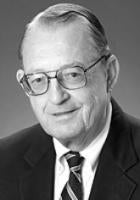Plaintiff SPX Corporation ("SPX") brought a patent infringement action against Master Cool U.S.A. ("Master Cool"). Master Cool answered and counterclaimed. In its counterclaim, it alleged that SPX had violated Section 2 of the Sherman Act by its utilization of short term exclusive dealing incentive contracts with distributors, which allegedly foreclosed competitive opportunities to Master Cool, SPX's direct competitor. Both SPX and Master Cool sell automotive refrigerant recycling and recovery machines ("ARRR equipment") through distributors. The distributors market the ARRR machines and related services to consumers through catalogs. Through a series of one year distributor contracts with dealers, SPX provided advertising funds that were exclusive to certain SPX products and that were unavailable should a distributor advertise competing products.
Each of the distributor and service contracts was for a one-year duration. Either party could terminate the contract "for any reason" upon thirty days written notice. Similarly, a distributor could terminate a contract "with or without cause" upon ninety days notice.
Master Cool's antitrust counterclaim alleged that SPX maintained a market share of 85-90%, and used its dominant market position to impose exclusivity agreements. It alleged "antitrust injury" in the market for ARRR equipment "in the form of reduced competition, innovation, and consumer choice", in violation of Section 2. The U.S. District Court, Northern District of Ohio dismissed the counterclaim on a FRCP 12(b)(6) motion, on the ground that, as a matter of law, the allegations were insufficient to allege an actionable injury to the competitive process, as opposed to a competitor. SPX Corporation v. Master Cool U.S.A., Inc., Case No. 3:10-CV-1266, ND, Ohio, 6/24/11.
Citing Iqbal, 129 S.Ct. at 1949, the court found that the alleged facts were insufficient to allege a plausible monopoly power maintenance claim. This was because, inter alia, the one year exclusive contracts are equally available to other distributors and competitors in the market. Thus, PSX's competitors, including Master Cool, could have engaged in competition for the same distributors, by engaging in competitive conduct of the same variety as engaged in by SPX. This being the case, the only plausible conclusion would be that at most, the counterclaim presents a case of competitor substitution, not elimination. There were no allegations that the limited exclusive dealing contracts were not competitively available to other actual or potential competitors in the relevant market, which was alleged to be a market for automotive refrigerant recycling and recovery machines and services. The court cited Roland Mach. Co. v. Dresser Indus., Inc., 749 F.2d 380, 393 (7th Cir. 1984) for the proposition that if an agreement does not exclude a significant competitor, the agreement could not possibly harm competition. In Roland, the court stated:
The exclusion of one or even several competitors for a short time or even a long time, is not ipso facto [an] unreasonable [restraint of trade]. 749 F.2d at 394.
However, unmentioned and undiscussed is the line of authority stemming from United States v. Dentsply Int'l, 399 F.3d 181 (3d Cir. 2005), cert. denied, 126 S.Ct. 1023 (2006). In Dentsply, the Third Circuit reversed the dismissal of a Department of Justice Antitrust Division complaint that alleged illegal monopoly power maintenance through a not seemingly dissimilar use of short term "at will" exclusive dealing contracts. Similar to the allegations of SPX's market share in Master Cool's counterclaim, the DOJ Antitrust Division complaint in Dentsply was that Dentsply had maintained a 75-80% market share from 1993 to 2005, and that its market share had been shown to be "impermeable". The DOJ argued that in the context of Dentsply's control of the relevant market, even the use of short-term exclusivity agreements, otherwise available to rivals, whether current competitors or potential entrants, were sufficient to deny efficient scale entry, and thus constituted an artificially imposed and maintained barrier to entrance or expansion. Further, the Dentsply court noted thatDentsply had been able to successfully impose a series of price increases within the relevant market without fear that the increases would not be followed by its smaller competitors. Thus, the pricing history constituted at least an inference of a "price umbrella" such that a smaller competitor's ability to utilize at least the same competitive tools as Dentsply was insufficient to constrain successful price increases by the dominant competitor, namely Dentsply. As the Third Circuit noted, Dentsply had . . . "effectively choked off the market for artificial teeth, leaving only a small sliver for competitors". See, 399 F.2d at 196.
Even before the Third Circuit's decision in Dentsply, there had been a series of conflicting decisions on the use of short term exclusivity practices as sufficient indicators of effective foreclosure, which would constitute insurmountable artificially imposed barriers to entry or expansion, which would trigger a Section 2 monopoly power maintenance offense. Compare LePage's, Inc. v. 3-M, 324 F.2d 141 (3d. Cir. 2003) (substantial discounts based on purchases of multiple product lines actionable, where through attribution, one or more of the product lines would have been at below a measure of permissible cost) with Concord Boat Corp. v. Brunswick Corp., 207 F.3d 1039 (8th Cir. 2000) (discounts based on high share of orders lawful where prices above cost, contracts are short-term, and entry is easy). See also, R.J. Reynolds Tobacco Co. v. Phillip Morris, Inc., 199 F.Supp. 2d 362 (MDNC 2002) (even defendant with market power may engage in promotional advertising and product positioning campaigns through funding of in-store display incentives, where rivals could gain same display space through use of similar competing practices).
What are the distinguishing factors between these lines of authorities? In a world where Twombly and Iqbal predominate, a bit of limited discovery might go a long way. Absent such discovery, which essentially converts a 12(b)(6) motion into a subsequent motion for summary adjudication, one must fall back on urging the district court to use its common sense as to what is "plausible" and what is "toothless", and hope that Dentsply-type allegations will be taken as initially sufficient to mutate a seemingly competitively neutral practice into one that is "impermeable" and such to constitute an artificially imposed barrier to entry of expansion, through the effective denial of efficient entry or expansion scale to rivals. The beat goes on. Stay tuned.



 />i
/>i
